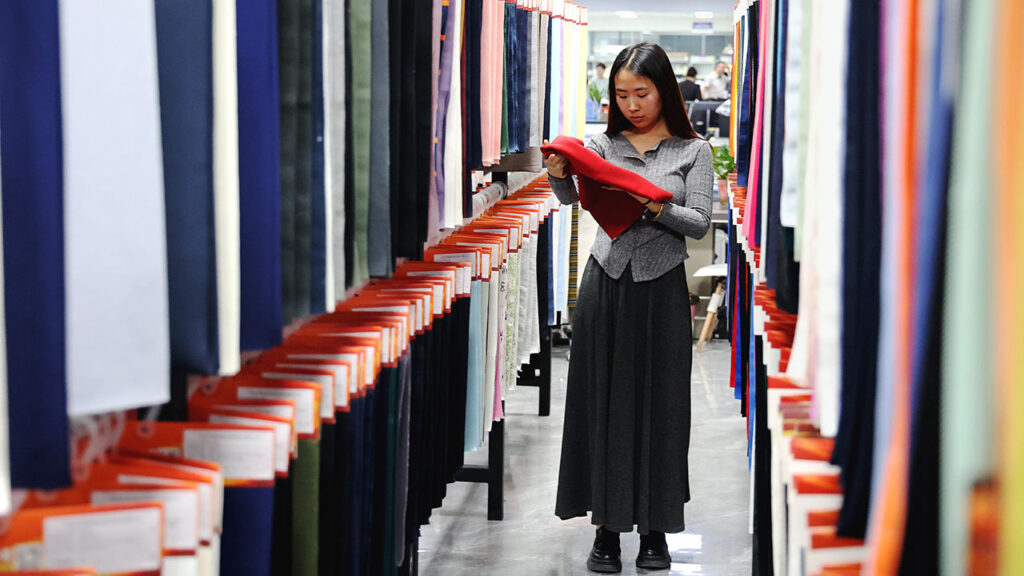In the contemporary fashion landscape, where authenticity and brand prestige play significant roles in consumer purchasing decisions, the price disparity between true designer products and their seemingly counterfeit counterparts can be astounding. For instance, an authentic Armani polo shirt may retail for around 1,400 yuan ($190) if purchased directly from the Armani fashion house’s official store on JD.com, which is hailed as one of China’s most prominent e-commerce platforms. This price reflects the value associated with the brand, considering the status it carries in the high fashion arena.
However, a closer inspection reveals a different side of the market dynamics at play. By entering the search term “Armani manufacturer” within the same platform, consumers encounter an array of similar polo shirts priced dramatically lower, at merely 60 yuan. This staggering difference in pricing raises interesting questions about authenticity, production, and the nature of consumer trust in the fashion industry. The less expensive iterations appear to be produced by suppliers linked to Armani, yet they are sold directly to local consumers devoid of the premium that typically accompanies branded merchandise. This situation creates a fascinating intersection of affordability and accessibility for Chinese shoppers, making high-end fashion seemingly more attainable while simultaneously presenting potential ethical and legal concerns regarding intellectual property rights.
The allure of such significant savings is compelling. For many consumers, especially in a rapidly developing market like China, the chance to own a product associated with luxury and status symbols is more attractive when it comes with a lower price tag. The prospect of acquiring a designer garment at a fraction of the cost does not simply represent a wise financial decision; it also embodies a sense of savvy shopping and resourcefulness, traits that are increasingly valued in today’s consumer culture. Additionally, the phenomenon of sellers bypassing brand mark-ups raises questions about traditional retail practices and the roles of manufacturers in the global supply chain.
The implications of these purchasing behaviors extend beyond personal financial considerations. They touch upon broader themes surrounding consumer identity and the value placed on brand names. To some, wearing a well-known label may signify success, sophistication, and a lifestyle that others aspire to replicate. However, as consumers become more tech-savvy and privy to the mechanics of e-commerce, this perception is beginning to evolve. The emergence of alternative purchasing channels offers a glimpse into a reality where the essence of fashion is less about the label itself and more about the quality and craftsmanship of the products.
Furthermore, this scenario highlights a critical tension in the fashion industry: the intricate balance between accessibility and exclusivity. High fashion traditionally thrives on exclusivity, cultivating an image that sets the wealthy apart from the general populace. Yet, as the digital age facilitates greater access to previously unattainable products, the concept of exclusivity is challenged. Consumers are becoming more adventurous, often exploring options that allow them to enjoy the aesthetics of luxury brands without the financial burden.
This evolving consumer behavior poses a challenge for brands like Armani and others in the luxury sector. They must navigate the complexities of maintaining brand integrity while also acknowledging the shifting desires of their customer base. As a response, brands may need to reconsider their pricing strategies, engagement with consumers, and their overall approach to sustainability and ethical production.
In conclusion, the interaction between brand prestige and consumer access exemplifies the broader shifts occurring within the fashion industry. As consumers in China, and indeed around the world, seek out value and quality, the traditional markers of luxury are increasingly redefined by how brands adapt to changing expectations and the burgeoning role of technology in shaping consumer habits. The exemplary case of the Armani polo shirt is a reflection of these larger trends, illuminating the tension between luxury and accessibility in a world where every item can be just a click away.



